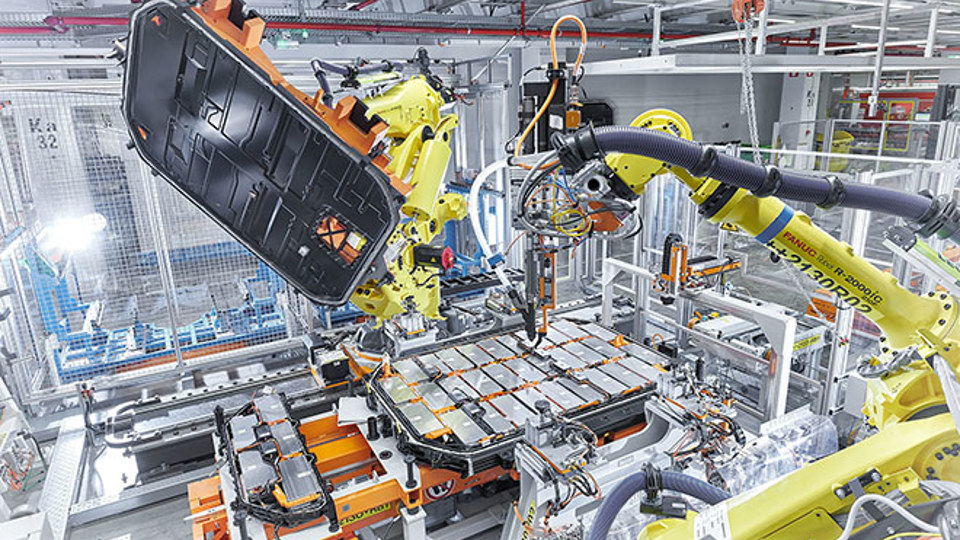6 Ways to Die-Cut Your Way to a Lighter Electric Vehicle Battery

The heart and soul of a Battery Electric Vehicle (BEV) is, not surprisingly, its battery. Unfortunately, it's the weight of these bulky portable power plants - often topping 1,500 pounds - that creates numerous challenges that drive the demand for the use of lightweight materials in their construction. Of course, there are costs associated with lightweighting initiatives, and, a point, implementing these changes no longer makes economic sense to the EV OEMs and their tier suppliers. Opportunities do exist, however, for lightweighting electric vehicle batteries that while small in size can have a large impact on the overall weight of the battery pack and its connected systems.
Here are 6 different applications where custom die-cut solutions from JBC Technologies can contribute to a lighter, more efficient EV battery system:
1. Bonding and Sealing
Traditional methods of bonding and sealing within an EV battery (mechanical fasteners, dense liquid adhesives) can be unwieldy and add unnecessary heft to the pack. Thin, flexible adhesive tapes and foams can be precision die-cut to the exact size and shape needed with little to no waste. Tapes and adhesive foams are faster to apply, don’t need complex dispensing equipment like liquid adhesives, and pose no environmental or safety issues. We can cut parts to bond battery cells together, bond modules together, and even seal the battery pack against intrusion by the outside environment.
2. Heat Shielding
The interior of the battery gets hot when it’s in use, especially when it's being charged. Managing the heat coming from the operation and charging activities of the battery pack can be a challenge. EV battery manufacturers and OEMs are seeking ways to stop this unwanted heat from impacting other sensitive electronic components and from entering the passenger cabin where it can negatively impact the comfort of the occupants. Lighter. Traditional solid metal heat shields just won't cut it. By using thin fiberglass and foil-faced composite materials cut to shape and that can be quickly installed with peel-and-stick adhesive backings, effective heat shielding can be put in place without sacrificing lightweighting gains.
3. Thermal Runaway Prevention & Mitigation
While rare, electric vehicle batteries can experience a phenomenon known as thermal runaway. This happens when a battery module or individual cell overheats and catches fire, leading to a chain reaction of subsequent module/cell fires that can quickly spread through the entire battery pack. While cooling methods can be used to prevent thermal runaway, EV battery manufacturers also need ways to slow down the propagation of flames within the battery pack in the event of a fire. Using lightweight, die-cut insulations and thermal composites affixed with high-temp PSA both in and around the battery modules can potentially constrain thermal runaway and slow thermal propagation.
4. Electrical Insulation and RFI Management
Keeping the battery components insulated from external electronics as well as each other in an electrical capacity can help to prevent overheating that can lead to shorting circuits and even thermal runaway. Thin engineered plastics can be die-cut and then bent and formed into many different shapes for use within the battery pack and the use of custom die-cut parts made from alternative thermal management materials like conductive gap pads and electrically conductive tapes can provide a big impact with little weight while shielding the electronics of the vehicle from potential interference (RFI) from the battery pack and vice versa.
5. NVH/BSR Reduction
Electric vehicles are naturally quieter than their internal combustion engine (ICE) counterparts and it's this lack of engine noise that can expose many noise behaviors typically hidden by engine and road noise. Add to this the fact that vibration can actually damage EV battery cells and it’s clear why NVH reduction and management is critical to the EV battery manufacturer. Using lightweight pieces of foam and acoustical insulation within the battery pack can help address NVH concerns at both the OEM and component manufacturer levels.
6. Heat Spreading
As we’ve already discussed, EV batteries are known to produce their fair share of heat. Making sure this heat doesn’t concentrate in one place (hot spots) is the role of so-called heat spreaders. Early EVs often made use of aluminum for heat spreading, and, while effective, aluminum isn’t exactly lightweight. For the same heat spreading impact as aluminum, flexible graphite is half the thickness and a third of the weight. By moving to graphite for thermal management EV batteries may be able to save up to 70 pounds per vehicle.
Custom Die-Cutting: The Best Bang for the Buck in EV Battery Lightweighting
Making affordable electric vehicles with enough range in a fully-charged battery pack to alleviate so-called range anxiety (consumers getting itchy at the thought of running out of juice between charging stations) – that’s the goal of today’s EV OEMs and their suppliers. Battery technology will continue to evolve, driving down costs and improving performance, but this will only get us part of the way. Manufacturers need to look for ways to get more out of existing technologies in the meantime. This means making the cars lighter and doing so with minimal impact on the vehicle’s cost.
That’s where custom die-cut parts made with flexible, lightweight high-performance materials come in. While making the frame, battery pack enclosure, or body of an EV might seem like the way to go, those changes are typically very expensive and time-consuming. However, small, incremental modifications to vehicle sub-systems can go a long way. A foam gasket here an aluminum/fiberglass peel and stick heat shield there. These little things can add up to big savings for both the OEM and their customers. Let JBC show you how our custom-die cutting and flexible materials conversion experience can help your EV battery shed those unwanted pounds. We’d love to hear from you.
Post header image ©Audi AG